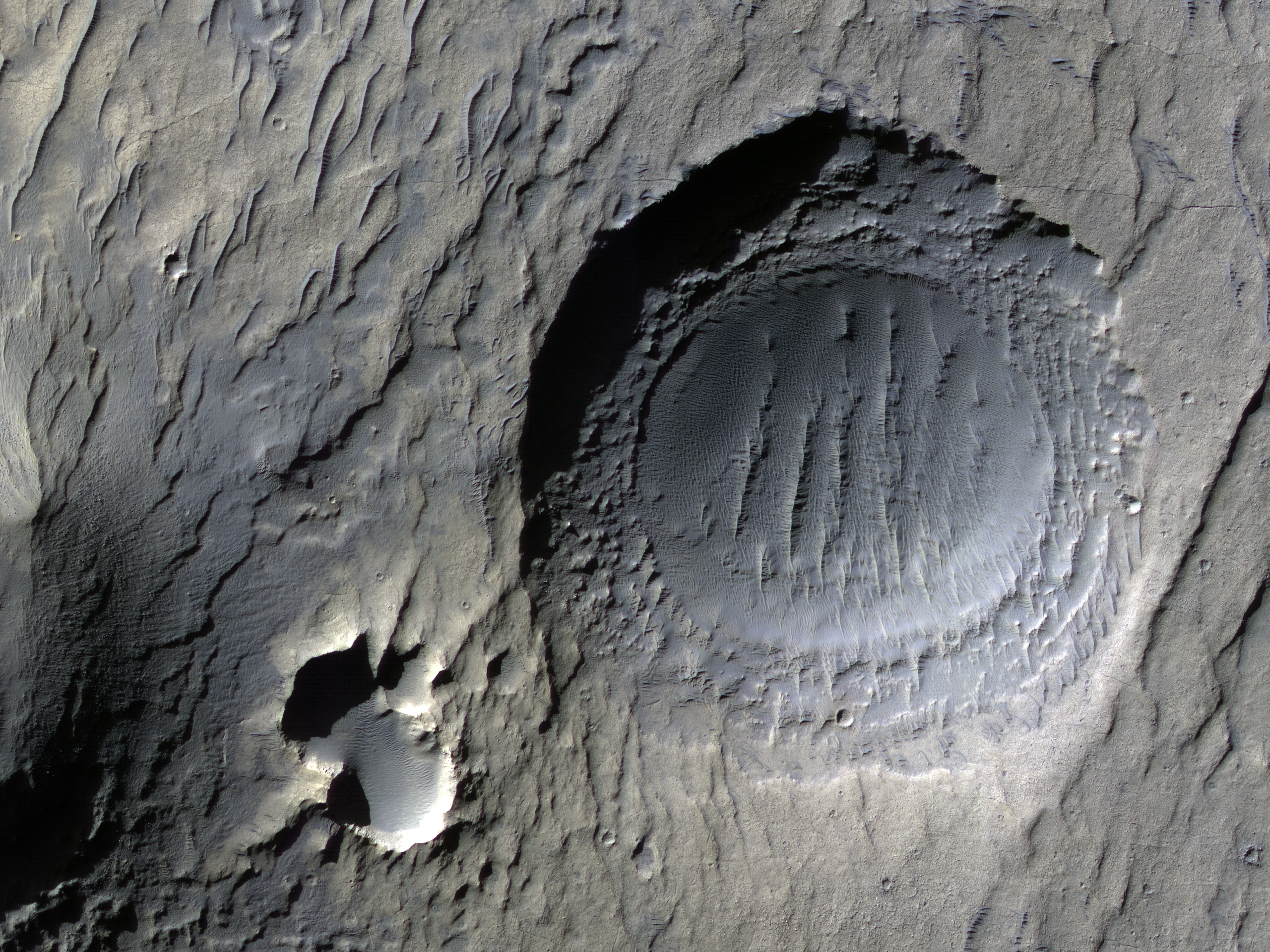Small impact craters usually have simple bowl shapes, but in some cases surface properties or processes can alter this shape in unusual ways.
This image shows an approximately 300-meter impact crater that appears to have
narrow terraces around the rim. How could these different crater morphologies form? One explanation is that the impact occurred into a surface with layers of differing strengths. However, the clearest example of this type of crater are better-preserved than this one.
Additional clues come from other craters that have a
raised mound in the center as opposed to a depression and are sometimes referred to as
inverted craters due to their topography. These craters were filled with sediment (or some material stronger than the surrounding material), and subsequent erosion removed the terrain around the filled material, leaving a small mound behind.
ID:
ESP_062388_1450date: 17 November 2019
altitude: 255 km
https://uahirise.org/hipod/ESP_062388_1450
NASA/JPL-Caltech/University of Arizona
#Mars #science #NASA
